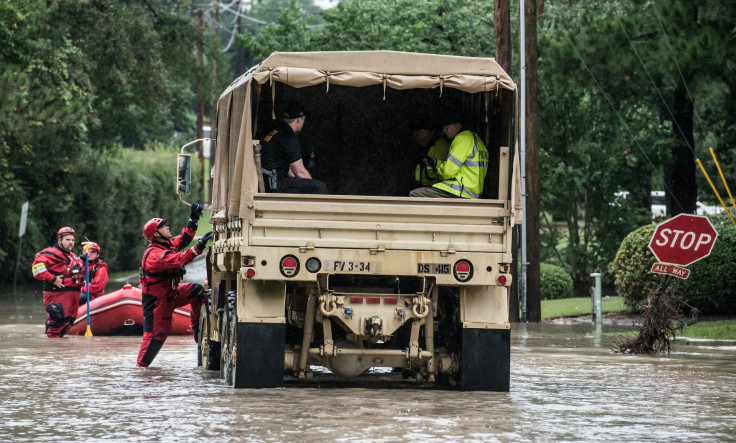South Carolina Flooding Update: President Obama Signs Disaster Declaration; Death Toll Rises To At Least 12

Death toll from the South Carolina flooding reached at least 10 Monday after historic floods and deadly torrents damaged roads, submerged houses and cars, prompting President Barack Obama to sign a disaster declaration for the state. Two deaths were also reported from neighboring North Carolina.
The federal aid will help recovery efforts, making funding available in Charleston, Dorchester, Georgetown, Horry, Lexington, Orangeburg, Richland, and Williamsburg counties.
The storm, which hit Thursday, dropped so much water on South Carolina that Gov. Nikki Haley called it a "thousand-year rainfall" event. Authorities reportedly said that 40,000 residents were without water and less than 3,500 remained without power. Officials also said that all the deaths were weather-related incidents, which included drowning.
"This is a Hugo-level event," Maj. Gen. Robert Livingston, head of the South Carolina National Guard, said, according to the Associated Press (AP), referring to the September 1989 hurricane that damaged Charleston. "We didn't see this level of erosion in Hugo. ... This water doesn't fool around."
The University of South Carolina announced Tuesday that classes will be canceled due to the floods.
Nearly 19 dams have breached statewide and homes have been submerged and ruined, especially in and around Columbia, the state capital, prompting mandatory evacuation. By Monday, the heaviest rains had reportedly moved into the mid-Atlantic states, authorities reportedly said.

Mayor of Columbia Steve Benjamin took to his Twitter account late Monday saying that “conditions are still serious.”
We're not out of the clear. Conditions are still serious. In many areas infrastructure remains compromised & flood levels continue to rise.
— Steve Benjamin (@SteveBenjaminSC) October 6, 2015Until the waters recede and every single person is safely accounted for, we will remain focused on preservation of life above all else.
— Steve Benjamin (@SteveBenjaminSC) October 6, 2015Now that President Obama has signed disaster declaration we've begun recovery. We can assess storm damage & get folks access to the support.
— Steve Benjamin (@SteveBenjaminSC) October 6, 2015Our recovery will not be quick or easy. It will take a lot of hard work for weeks and months. But we'll recover. And we'll do it together.
— Steve Benjamin (@SteveBenjaminSC) October 6, 2015© Copyright IBTimes 2025. All rights reserved.





















